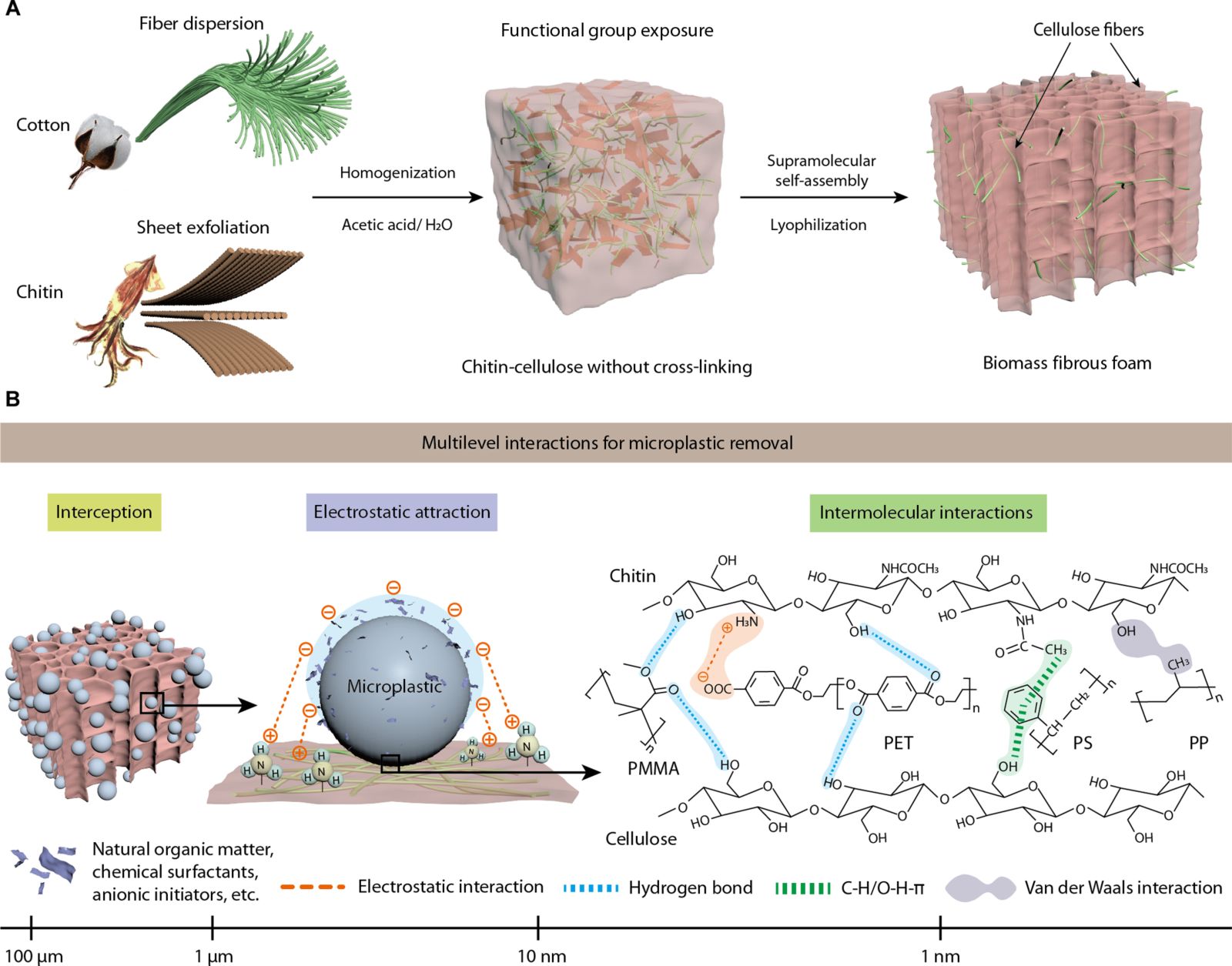This material removes almost all plastic from water 🌍
Published by Cédric,
Article author: Cédric DEPOND
Source: Science Advances
Other Languages: FR, DE, ES, PT
Article author: Cédric DEPOND
Source: Science Advances
Other Languages: FR, DE, ES, PT
Follow us on Google News (click on ☆)
Microplastic pollution poses a major environmental threat, with visible impacts on aquatic wildlife and humans. These particles are everywhere. A team of researchers from Wuhan University has recently developed a promising material capable of absorbing up to 99.9% of these pollutants.

(A) Self-assembled biomass foam preparation from cellulose and β-chitin without crosslinking.
(B) Microplastic removal using foam through multiple interactions: physical interception, electrostatic attraction, and intermolecular interactions.
Their invention is based on a combination of chitin (sourced from squid bones) and cotton cellulose. These two organic components are known for their pollution degradation properties. The resulting sponge can absorb microplastics through physical and electrostatic interactions.
In their tests, the researchers used water samples collected from various environments: ponds, lakes, seawater, and irrigation water. Results showed the sponge captured between 95% and 99.9% of plastic particles, even after multiple cleaning cycles. This efficiency far surpasses existing systems, which are often expensive and difficult to implement on a large scale.
The researchers noted that the sponge, while being biodegradable, also has the advantage of being easy to produce. Unlike other complex filtration solutions, chitin and cellulose are widely available and inexpensive, which could enable large-scale production.
The potential of this innovation seems immense, with possible applications in domestic or industrial filtration systems, as well as in devices like washing machines, for example. The main current challenge remains testing its effectiveness on a large scale.
The issue of microplastics is not limited to oceans. These particles are also present in the air, drinking water, and even food. Studies estimate that an individual consumes around 4,000 plastic particles annually. Moreover, microplastics can carry toxic substances, such as PFAS, linked to health risks.
Despite the persistence of this pollution, this sponge could offer an effective and sustainable solution. However, questions remain, particularly about the management of microplastics absorbed by the material. Researchers will also need to ensure its long-term impact on ecosystems.
Ultimately, the chitin and cellulose sponge could become a key tool in combating plastic pollution. But as an expert in Australia emphasized, it is crucial not to forget that the best solution remains reducing plastic production at the source.